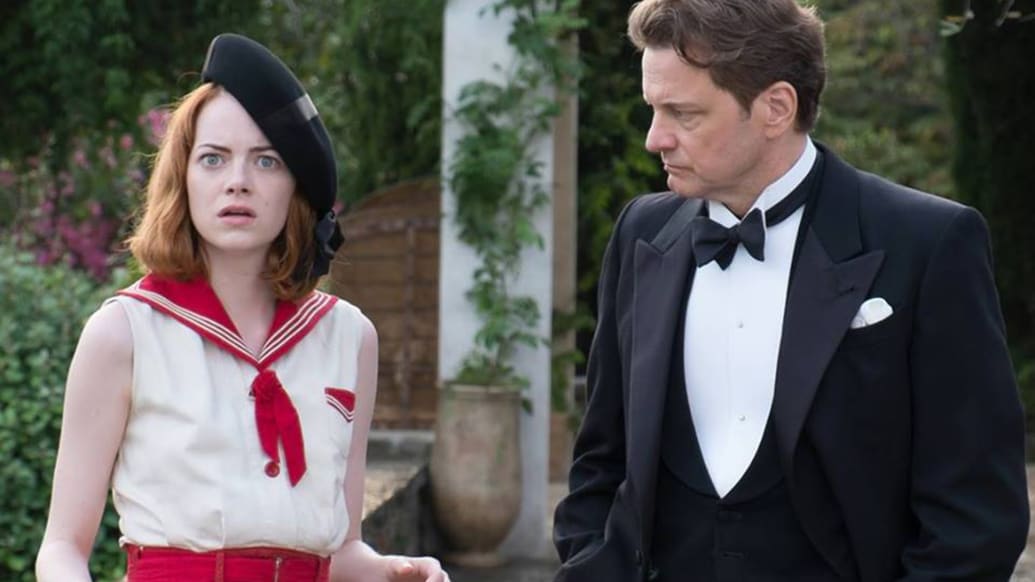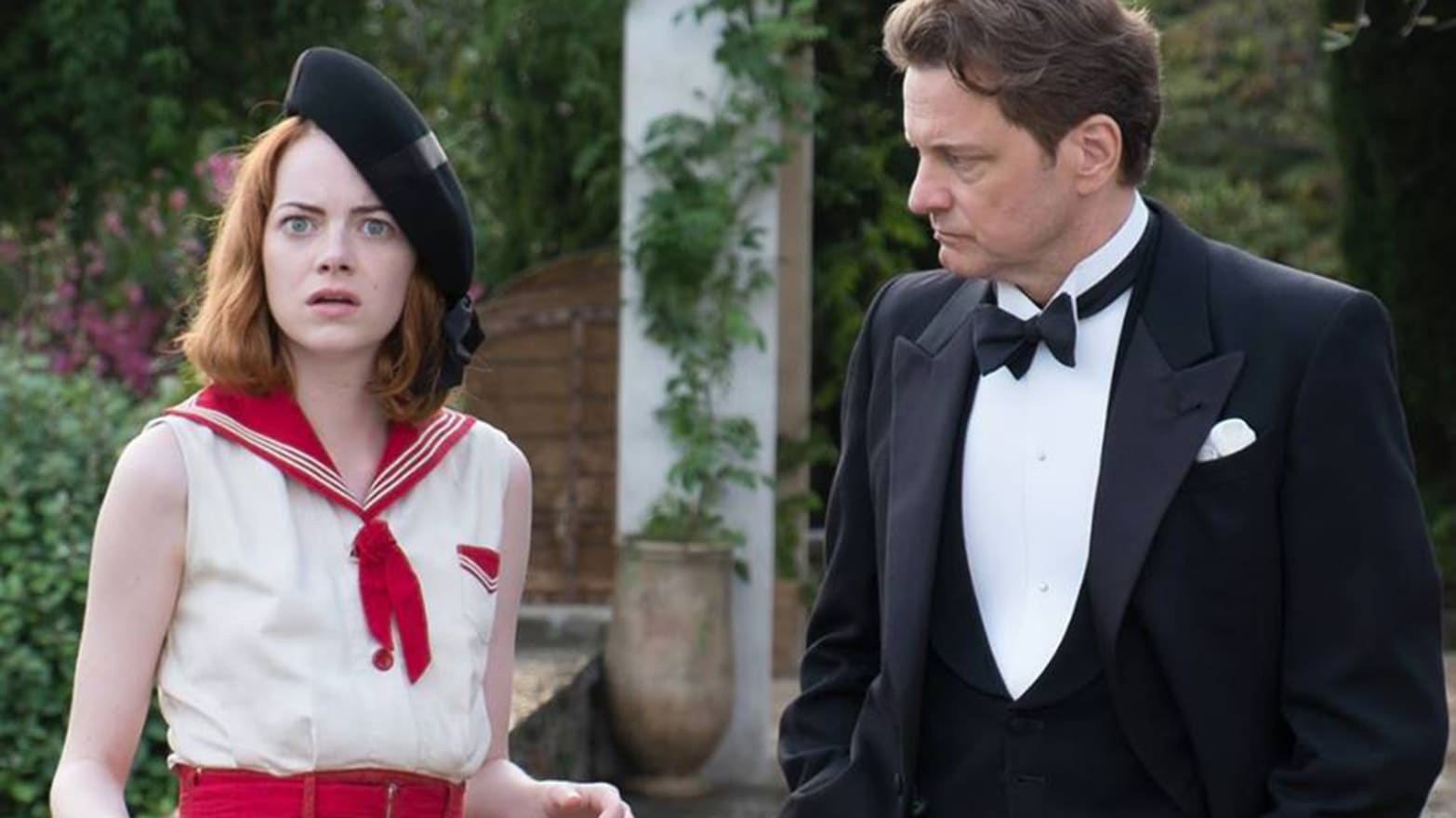Every Woody Allen review begins with an unspoken disclaimer.

“I don’t know Woody Allen. I don’t know what happened with the Farrows. I am not a judge, the last time I did jury duty it was for a parking ticket. I don’t have any evidence. This is not an endorsement (even if it is an endorsement). Please let me finish this review. Please don’t ask me any questions.”
Woody Allen isn’t the first filmmaker whose personal life has garnered public scandal, and he won’t be the last. But the intensity of the mob around Allen is not afforded to every celebrity. It takes a transgression with real bite to inspire a furor of this intensity—Brangelina burn Jennifer! La Liz absconds with Burton!
It’s true that the blow-up between Allen and the Farrow family is operatic in scale. Regardless of which side you align with (or if you align with anyone at all), Dylan Farrow’s New York Times op-ed proved very publically that at least one life has been irrevocably tainted by the events that transpired 20 years ago, and that her case has remained untried and has certainly fueled the flames of public outrage.
But even without Dylan Farrow’s op-ed, even if Allen had been found innocent by a jury in a court of law 20 years ago when the accusations arose—he never would have escaped public outrage. More than any op-ed, more than any tweets, it’s Allen’s films that inspire scrutiny—and they have from the very beginning of his career.
Woody Allen is far from the first filmmaker to direct himself, but the level of introspection on display in any given moment of a Woody Allen movie was, for quite some time, utterly unique. In a world of Lena Dunhams and Louis C.K.s, it can be hard to remember that sometimes lacerating self-reflections were once kept in diaries and memoirs, and not on screens. Woody Allen’s movies promised something unique. A personal invitation into one man’s life. He cast himself, he cast lovers, ex-lovers, friends, collaborators, and his films became famous for their bantering specificity. Woody Allen made films that could make you forget there was a gap between the screen and reality.
Sometimes, watching his movies it can feel like we know Woody Allen better then we know ourselves. We know how he talks. We know his gestures, his tics, his pet peeves, and his turn-ons. We know he likes classical music and French movies. We know the only thing more hopeless than his hypochondria is his romanticism. And we know he has a taste for young—you might even say very young—women.
Is it unethical to talk about Woody Allen’s personal life when talking about his movies? Maybe. But to ignore the facts of Woody Allen’s would not only be disingenuous, it would be a disservice to his legacy as a filmmaker.
And after all, what else is there to talk about? The movies?
Magic in the Moonlight is the latest of Woody’s piffles, and it has all the pleasant empty charm we’ve come to expect from his late career excursions. Colin Firth sulks as amiably as Emma Stone sparkles, and as ever, Woody has surrounded himself with technicians at the peak of their craft—he must know it’s hard to accuse a filmmaker of apathy when you’re looking at a Sonia Grande party dress or a Darius Khondji moonbeam.
If what you’re looking for is a pleasantry, then Magic in the Moonlight is a fine one. Less self-conscious than Midnight in Paris, less disjointed than Blue Jasmine, it’s as pleasant a film as Woody Allen’s ever made. But Woody Allen is better than pleasantries. When its 90 minutes are over, and the lights are up, the question remains: What’s the point?
It’s not that Magic in the Moonlight was destined to be inconsequential. In its best stretches the film is reminiscent of Manhattan—still Woody’s best film. Yes, we’re in the 1920s with flappers and séances this time around and Colin Firth sure does wear a suit better than Woody Allen ever could—but at its heart Magic in the Moonlight is the same story of a lost and lonely man who finds hope in the love of a young woman.
Maybe it’s been a while since Woody Allen watched Manhattan—it’s never been his favorite of his own films—but what makes Manhattan work is its conviction. Isaac’s romance with high school senior Tracy is monumentally more scandalous than anything that happens in Magic in the Moonlight. Yet Manhattan has none of the defensiveness that seems to be peeking around the corners of this film. Where Magic in the Moonlight approaches its romance with caution, sentencing Colin Firth to explain and re-explain what’s been obvious from the moment Emma Stone showed up with the sunlight in her hair—Manhattan bounds recklessly to its conclusion.
It’s one of the great romantic endings in film history. Will Isaac catch Tracy? Will she leave? Will she take him back?
She’s leaving, but she swears she’ll come back for him. He scoffs. How could anything work out when the world is so unkind? And then the magic happens.
Mariel Hemingway looks back at Woody Allen’s Isaac and offers, sheepishly, with the girlishness of a child who hasn’t yet become a woman, “You have to have a little faith in people.”
Woody cuts back to himself. But his reaction—awed, comforted, peaceful—is just a confirmation. She’s salvation, this Tracy. She’s an extraordinary creature—magical even—her youth a gift. He’d be a fool not to see it, and an even bigger fool to let her go. The camera leaves them. There’s nothing more we need to see.
By contrast, what has Magic in the Moonlight got to convert you to Woody’s team? A couple of matching outfits and one of the limpest kisses in recent movie history?
Colin Firth is married to a woman nine years his junior. He has children who are Emma Stone’s age. Emma Stone is dating Spider-Man. If dating a generation younger was strange in 1979, it’s downright deviant now. The film never addresses the implausibility (or less generously, the perversion) of the romance between Stanley and Sophie, and so it hangs in the air to rot, lingering long after the film’s pleasantries have faded from view.
Magic in the Moonlight might not have sparked Woody Allen’s artistic muse the way that Vicky Cristina Barcelona or even Scoop seemed to, but it doesn’t play like a paycheck gig either. No, the farther you get from Magic in the Moonlight, the more it looks like Woody talking to himself and wagging his finger at the plebeians who dare to question his intentions. He’s so absorbed with being right that he never bothers to worry about if any magic has made it to the screen.
Romance and salvation in Woody Allen’s films haven’t always been defined by youth. Hannah and Her Sisters, another of his greatest films, found Allen romancing a fellow lonely heart, but this time it was Dianne Wiest. Their scenes come at the end of the film, after watching the two characters struggle alone against their respective demons. It’s different from the rush of security that Mariel Hemingway’s last line offers to Manhattan. The romance in Hannah And Her Sisters is somehow more delicate, more vulnerable to failure. But there is something immensely satisfying about watching two people fall in love when you know they’ve been tossed around a bit by life. It’s one of the most gentle films of Allen’s career, a grace note that could make any filmmaker proud.
Woody doesn’t like it—he thinks that final romance between himself and Wiest is idealistic.
It’s a shame Woody doesn’t believe that a grown-up man and a grown-up woman could find love and happiness together, that it’s possible for adults to renew each other as equals. It probably would have saved him a lot of personal trauma. And it would probably make for some better movies, too.

